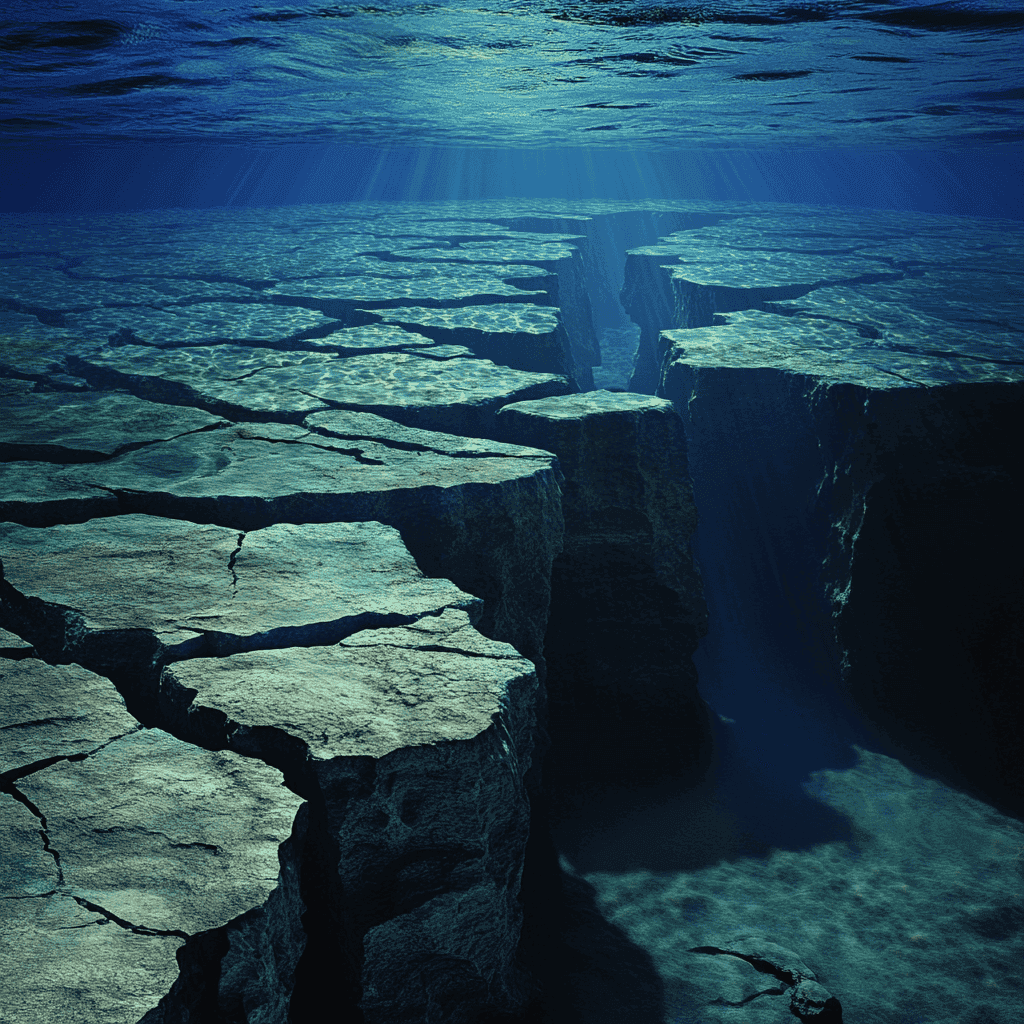A crash course in long-term thinking
In the column series “What the world would be like, if.... Elcke Vels explores intriguing scenarios that deviate from the status quo Each column is supported by AI-generated images.
Published on October 12, 2024

Our DATA+ expert, Elcke Vels, explores AI, cyber security, and Dutch innovation. Her "What if..." column imagines bold scenarios beyond the norm.
On the border of Italy and Austria lie the Carnic Alps. Besides the majestic mountains - which I have never had the opportunity to admire myself, unfortunately - there is something else, something very special, about this area.
You can find fossils of marine animals. Scientists found not only coral and shells but also remains of prehistoric animals, such as trilobites. Thousands of scientific publications appeared about the area.
Why is it that Millions of years ago, the area was underwater, and traces of this former marine environment are still visible today In other words, nature is masterful at long-term processes.
Renewal of the ocean floor
Another long-term natural process: the renewal of the ocean floor. It takes hundreds of thousands of years before this becomes visible to the naked eye It works like this: in the middle of the oceans there are mid-oceanic ridges, where two plates move apart When these plates separate, magma rises from the mantle to fill the space. This magma solidifies and forms a new oceanic crust. The process of seafloor spreading causes the ocean floor to renew. This is important, for example, for the redistribution of minerals.
Immediate threats
Whereas nature takes it easy in many processes, we humans are geared to immediate survival and making decisions in the here and now. Our brains are programmed to respond to immediate needs and threats. This often makes it difficult for us to consider the long-term consequences of our actions
To give an example: in the famous marshmallow experiment, toddlers were given a choice They could take a marshmallow right away or wait, only to get two later. Some children showed self-control and long-term thinking and waited The majority, however, could not However, many could not
A large-scale example: the Paris Agreement (2015) is an international treaty signed by 159 member states of the United Nations. The goal: to curb global warming. However, despite commitments by countries to reduce their emissions, current policies and actions worldwide are still insufficient to achieve these goals Most countries are far from their targets Similarly, the Netherlands
Let the major challenges we currently face, such as the climate crisis, call for concrete long-term plans ... we copy nature's long-term thinking? Would we then move forward in the fight against climate change And what technology could help us do so
Technology comes to the rescue
In our scenario, things would be a lot better in our country We pretend that people do take the long view. And we have technology that helps us make clear plans.
The Netherlands is well on its way to reducing CO₂ emissions by 55% by 2030 compared to 1990. To achieve these goals, the Lower House has made simulations mandatory in the climate debate. These simulations place policy proposals in realistic scenarios and analyze the long-term impact Advanced models map variables such as CO₂ emissions, economic growth, and energy consumption, and present them visually to members of the House of Representatives. This gives them instant insight into the consequences of their decisions over decades.
Moreover, during government debates and meetings, alarm bells can ring when too much emphasis is placed on short-term thinking Suppose the infrastructure minister makes a proposal to build a highway between two major cities, arguing that this will stimulate economic growth Should this decision have significant negative effects on the climate, the climate system sounds the alarm. Those present are then reconsidering the consequences of their decisions.
In addition, a consortium of Dutch AI companies, with government support, has developed a pioneering AI system specifically for large polluters This system is free of charge.
Once active, the system begins collecting data on various business processes, such as energy consumption, waste production, and resource use. Powerful algorithms analyze this data and provide real-time insights into the company's carbon footprint The system generates visual reports that map the impact of each decision Shell gets insight in no time into whether offering a new type of biofuel is a green choice Tata Steel sees which air filters work best, at the lowest cost.
Such technologies ensure that we achieve the goals we set in the Paris Agreement. Moreover, we look beyond CO₂ reduction. The AI systems of both government and companies also focus on other important factors, such as reducing nitrogen emissions, promoting a circular economy, and optimizing water consumption.
Two marshmallows
We don't change the nature of humans overnight Yet we must make the right choices for the future if we are to survive as a species Fortunately, we are increasingly seeing that technology can support us in our thinking process Just as toddlers learn to set aside a marshmallow for the reward of two pieces later, we too can have the discipline to achieve our long-term climate goals
